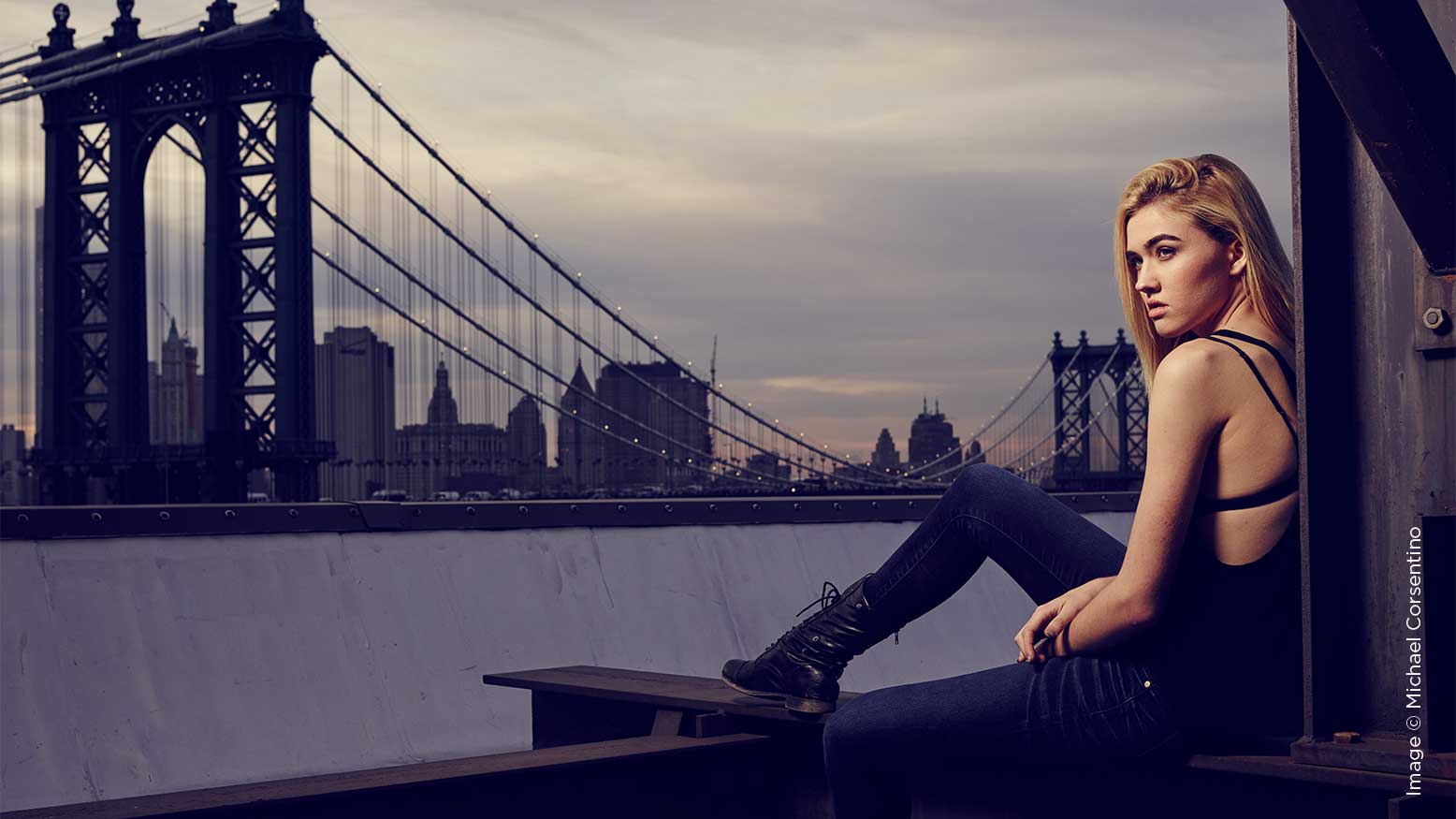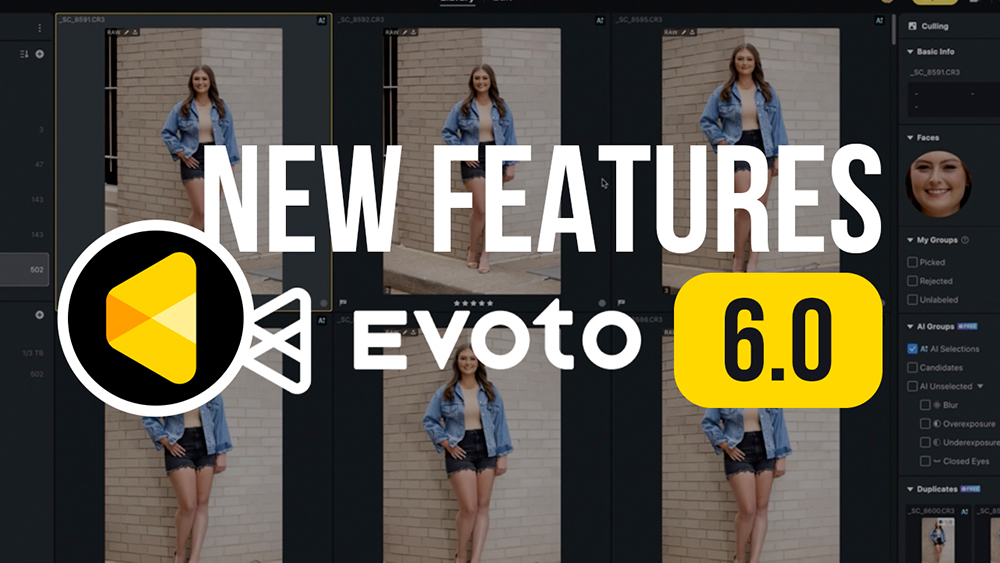8 Things to Consider When Buying a Strobe with Michael Corsentino
Choosing the right strobe for your needs is not only a question of budget but how you intend to use the strobe. The criteria and features desirable for studio strobes differ from those designed for location use, and vice versa. That said, strobes designed for location use can be used in the studio, and studio strobes can in some cases be used on location. So, if you can only budget for one type of strobe, don’t worry. Keep in mind that every strobe involves a series of compromises, and there is no one strobe that does everything and does it well. That’s why there are portable strobes designed for location work and larger, more powerful strobes intended for studio work. Each has its pluses, minuses and place. Below are the eight most important things to consider when you’re in the market for a strobe.
Exposure Modes
Manual vs. Automatic vs. TTL. Actually, it’s really not that complicated. Strobes are typically available in either manual or semi-automatic models. Fully manual strobes are mostly legacy models at this point, but don’t underestimate the value and power of manual exposure. In fact, if you’re operating on a tight budget, manual strobes are the way to go. The caveat with manual is that you’ll forgo many of the modern-day amenities available with semi-automatic models. Manual couldn’t be easier—it simply comes down to dialing in more or less power to suit the exposure. Semi-Automatic strobes offer a wide variety of useful exposure modes, from manual to TTL and High Speed Sync. TTL is invaluable for fast-paced work where the distance from the strobe to the subject is rapidly changing. TTL calculates the exposure for you and allows you to season to taste as desired. High Speed Sync allows shutter speeds beyond your camera’s maximum flash sync speed for easier balancing of ambient and flash. The best semi-automatic strobes allow a TTL exposure to be switched over to manual for fine-tuning on the fly—very cool. Given my druthers, I’d opt for a fully loaded, wireless, semi-automatic model with full manual control override any day of the week.
Size & Weight
Size matters! Sorry I couldn’t help myself. All kidding aside, the size and weight of each strobe in your kit matters a great deal and dictates how they’re best used. Large, heavy strobes are best confined to the studio. If the studio makes up the majority of your work, that’s fine, but if location work is in the mix, you’ll also want a good set of light-weight, compact strobes. And when I say light-weight, I mean really light-weight. Size and weight issues become even more critical when air travel is involved. For air travel, you’ll want the lightest, most compact strobes possible, along with the right amount of power. Keep in mind, domestic over-weight fees are high, but the international fees are exorbitant. I learned this the hard way checking cameras and lenses overhead on various legs during a trip through Turkey. I took a major shellacking at every stop. Even some battery-operated strobes, which claim to be portable, aren’t ideal for extended location use. Will your strobe be boomed? Will it be held overhead by an assistant? What kind of stand will you need to bring with you to support it? These are important questions to ask. For location work and travel, I use a 500-watt second pack and head combo with a head under two pounds. Choose the lightest, most compact strobe with the appropriate power for your needs that you can afford.
Maximum/Minimum Output
The maximum power output a strobe is able to deliver is just as important as its minimum power setting. This may seem counterintuitive, but the minimum power setting becomes a very important consideration in the studio when strobes are often used in close proximity to a subject. Too much power, and you’ll end up with overexposed images, using f-stops much smaller than desired, sheets of neutral density gel, or moving the back further and changing the quality of light. For this reason, when you’re choosing a strobe, look for those with a wide f-stop exposure range. Ideally, you’ll want one or more strobes, which will provide enough power when heavy lifting like overpowering the sun is called for, as well as the ability to be dialed way down for low-power applications like wide-aperture studio portraits, a kiss of fill light, etc. At the top end, I’d recommend 500-1,000 watt seconds, with a low setting in the 30-50 watt second range. Let’s get low—real low.
Power Source
How strobes are powered is also another important consideration. Mains or battery power—which one is right for you? If you work exclusively in the studio, strobes that use mains power are likely to be a good fit and less expensive than battery-powered models. Desired power output also plays a role in your choice. Battery-operated strobes typically max out between 500 and 1,200 watt seconds. If you need higher-powered strobes, which is often the case in the studio, mains power is your only option. If your work is more location-oriented and 500 to 1,200 watt seconds of strobe output is enough light for what you typically shoot, then battery power is the way to go without a doubt. If your work is a mix of both location and studio, two or three battery-operated, 500-watt-second strobes are a great option. I worked with this setup for years. Keep in mind, with today’s high-quality sensors, higher ISOs can be used to make up the difference when using lower-powered strobes without sacrificing image quality.
Digital vs. Analog
Strobes are available in two flavors: digital and analog. Both have their strengths and weaknesses. Digital strobes are a more recent development, and many offer conveniences such as a digital interface, High Speed Sync, TTL metering, light weight, wireless triggering, precise power control, and the control of groups of lights either together or individually from the camera position. Analog packs and heads, on the other hand, are old school and manual-only, offer no HHS or TTL, are typically heavier, and offer only wireless on/off trigging when used in combination with a set of pocket wizards or the like. With analog packs, power adjustments need to be made at the pack, which involves more walking back and forth absent an assistant. When are analog packs a good fit? When you want to save money. If you’re comfortable with a handheld flash meter and working manually, you can save a bundle buying legacy strobes on the used market. In the studio, I use fully manual analog pack and head systems almost exclusively. They’re built like tanks and would cost tens of thousands of dollars to replace with their digital counterparts.
Modeling Light
Most modern-day strobes include a modeling light—either incandescent or, more recently, LED. Modeling lights serve a number of important functions. They allow photographers to see where the light from their strobe is falling with continuous light, assess catch light placement in a subject’s eyes, and judge the quality of light from the modifier being used, all prior to firing the strobe. LED modeling lights can also do double duty as continuous light sources for video and still applications or mixing strobe and constant light for special effects such as dragging the shutter to create light trails. Most ideal are LED modeling lights that include user-adjustable color temperature, allowing either tungsten or daylight balance to be dialed in as needed. Keep in mind, with battery-operated strobes, LED modeling lights and similar need to be used sparingly as they’ll quickly drain battery power.
Recycle Speed
The length of time it takes for a flash to recover after it fires, then fully recharge and fire again is referred to as its “recycle” speed. The faster the recycle speed, the faster a photographer can shoot without outrunning the strobe and ending up with underexposed misfires. A fast recycle speed is important for those shooting fashion, sports, dancers, weddings—essentially any fast-moving subject matter. Recycle speed matters less so for those who are shooting portraits, still lifes, and static product photography. This is another feature where you get what you pay for. Pricier strobes typically offer faster recycle speeds as an amenity. Even if you don’t think you need fast recycle, once you experience it, you’ll wonder how you ever lived without it. How fast is fast enough? It really just comes down to what you’re shooting and the way you like to work. My advice is to get a strobe with the fastest recycle you can afford.
Flash Duration
When a flash is fired, the length of time the flash tube remains illuminated at its brightest output is known as “flash duration.” Flash tubes operate on bell curves during which they ramp up, fully illuminate at the top, and fall off, dimming at the bottom of the curve. How quickly this happens impacts a strobe’s ability to freeze motion. This is a critical feature for those shooting dancers, sports, beverage work, scientific applications, etc. Basically, anything where tack-sharp motion freezing via strobe is called for requires a strobe with a very fast flash duration. In many cases, the faster the flash duration possible, the more expensive the pack and compatible heads will be. That said, there are value propositions out there for those in need of this feature. Those offer very fast flash durations without breaking the bank—the Paul. C. Buff Einstein comes to mind.








